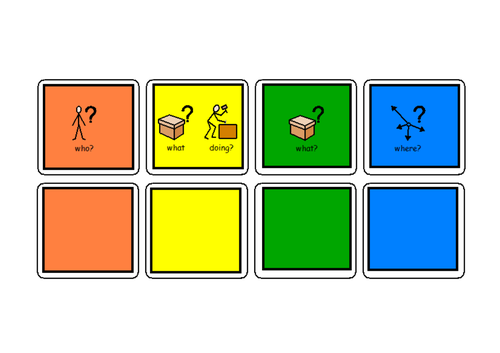Colourful Semantics is more than just a fun name—it’s a proven, visually stimulating strategy to support children’s language development. Designed with the power of colour and structure, this method has found its way into classrooms, speech therapy sessions, and homes around the world. But what exactly is it, how does it work, and why is it so effective?
What is Colourful Semantics?
At its core, Colourful Semantics is a visual language strategy that uses colour-coding to support sentence building and understanding. Each element of a sentence is assigned a specific colour, helping children identify roles and structures within a sentence.
Originally developed by speech and language therapist Alison Bryan, the approach is often used with children who have speech, language, and communication needs (SLCN), but it’s also incredibly useful for children learning English as an additional language or even those just starting to grasp sentence structure.
How Colourful Semantics Works
Colourful Semantics breaks down sentences into key components and assigns a colour to each:
- WHO? (Subject) – Orange
- WHAT DOING? (Verb) – Yellow
- WHAT? (Object) – Green
- WHERE? (Place) – Blue
- WHEN? (Time) – Purple
- DESCRIBING WORDS? (Adjectives/Adverbs) – Pink or grey (optional add-ons)
These components are built up gradually. For example, a child might start with just “The dog (orange) is running (yellow)”, and later expand to “The dog is running in the park (blue) this morning (purple).”
This progression helps children visually and cognitively process how sentences are formed.
Why Colourful Semantics is So Effective
There are several reasons why this strategy is widely loved by educators and therapists:
1. Visual Learning is Powerful
Many children respond better to visual stimuli than to verbal instruction. By associating sentence parts with colours, abstract concepts become concrete and easier to understand.
2. Supports Sentence Structure
Rather than just learning vocabulary in isolation, children learn how to put words together in grammatically correct ways. This builds both expressive and receptive language skills.
3. Reduces Cognitive Load
By breaking down sentences into manageable, colour-coded chunks, children are less overwhelmed and can focus on one element at a time.
4. Great for Non-Verbal or Minimally Verbal Children
For children using AAC devices (Augmentative and Alternative Communication), Colourful Semantics can offer a scaffold for expressive communication, helping them build phrases and sentences with guidance.
Where is Colourful Semantics Used?
You’ll find Colourful Semantics in:
- Speech and Language Therapy
- Early years classrooms and nurseries
- Primary schools
- Special education settings
- Home learning environments
Its flexibility makes it ideal for group instruction, one-on-one sessions, or even remote learning.
How to Start Using Colourful Semantics
Getting started is surprisingly simple:
- Introduce the concept with a story, picture, or video.
- Use coloured cards or strips for each semantic role.
- Encourage children to build sentences using the cards.
- Ask guiding questions, like:
- “Who is in the picture?” (Orange card)
- “What are they doing?” (Yellow card)
- “Where are they?” (Blue card)
- Gradually increase complexity, adding adjectives, conjunctions, and time-related words.
Many online platforms offer free resources, printable cards, and interactive games to support the process.
Real-Life Example
Here’s how a sentence might build up using Colourful Semantics:
Picture: A boy is kicking a ball in the garden.
- Who? – The boy (Orange)
- What doing? – is kicking (Yellow)
- What? – the ball (Green)
- Where? – in the garden (Blue)
Full sentence:
🟧 The boy 🟨 is kicking 🟩 the ball 🟦 in the garden
Adapting Colourful Semantics for Different Needs
One of the greatest strengths of this system is its adaptability:
- For autistic children, it offers structure and predictability.
- For children with Down syndrome, it provides a tactile, visual method to build sentences.
- For English language learners, it simplifies grammar and syntax.
You can also make it multisensory by using toys, real objects, or role play to represent each part of the sentence.
Encouraging Communication Through Colour
Parents and teachers alike have seen children go from one-word utterances to full sentences thanks to this method. Colourful Semantics doesn’t just teach sentence structure—it empowers children to express themselves confidently.
When language barriers fall, confidence rises. And when confidence rises, so does learning.
FAQ
No. While it’s especially useful for children with speech or language challenges, it can benefit any child learning to build stronger sentences, including EAL learners.
Absolutely. Many resources are parent-friendly. Start with simple picture cards and colour-coded cues.
Yes. It helps children organize their thoughts, which improves both spoken and written expression.
Primarily ages 3 to 8, but older children with additional needs can benefit too.
Conclusion:
Colourful Semantics isn’t about pretty colours. It’s about giving every child a voice. Whether used in therapy, classrooms, or at home, this approach has transformed how we teach and support language. It’s visual, logical, and most importantly—effective.


